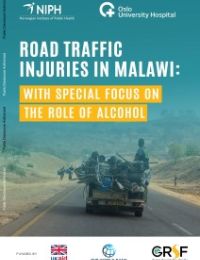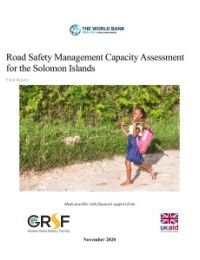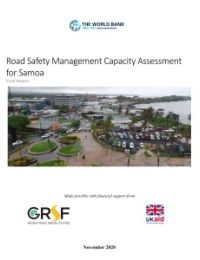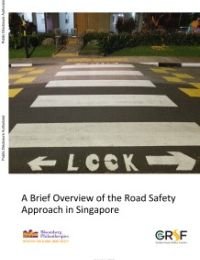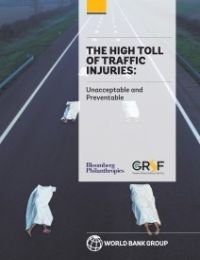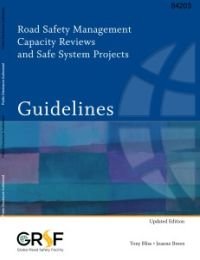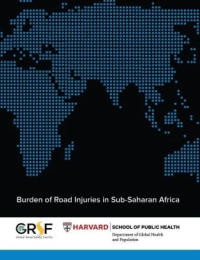Publications
31-39 of 39
-
-
Post-Crash Health Care
Road Traffic Injuries in Malawi: With Special Focus on the Role of Alcohol
June 2021
-
Of 1347 eligible patients who were asked to participate during a period of about three months, 1259 (93.5 percent) gave informed consent, eight patients were not tested for alcohol and thus excluded, resulting in 1251 patients in the study.
-
The prevalence of alcohol was 30.7 percent among males and only 2.5 percent among females, who represented 19.2% of the total cases. There were minor differences across different age groups, with the highest prevalence of alcohol use among those between 25 and 44 years of age (26-27 percent) and lowest among those 45 years of age and older (19.7 percent).
-
The highest prevalence of alcohol was found among patients with no formal education (33.3 percent) compared to patients with college or university education (22.1 percent) with the lowest prevalence.
-
When comparing the different road users, the highest prevalence of alcohol was found among pedestrians (41.8 percent) while the prevalence among the other road users varied from 19.1 percent (bicycle riders) to 24 percent (motorcycle riders).
-
Patients injured during weekend night crashes, showed the highest prevalence of alcohol (59.6 percent), followed by those injured during weekend evenings (36.8 percent) and weekday nights (35.3 percent).
-
Regarding drinking habits, measured by the AUDIT-C questionnaire, hazardous drinking was more common among males (26 percent) than among females (4.2 percent). Age group 25-34 years had the highest prevalence of positive AUDIT-C test (26 percent).
-
The blood alcohol concentrations (BACs) at the time of injury were estimated by back-calculation for road users who were tested for alcohol within five hours after injury in accordance with forensic medicine practices. An estimated proportion of 15.2% of the injured motor vehicle drivers had BAC at or above 0.08g/dl when the crash occurred.
-
-
Road Safety Management
Road Safety Management Capacity Assessment for the Solomon Islands
February 2021
-
-
Utilize GRSF recommended methodology to gain a thorough understanding of road safety management capacity;
-
Assess institutional management arrangements as an important focus of the analysis of the road safety system in Samoa;
-
Consider the existing national road safety strategy—Samoa National Action Plan (SNAP) for the Decade of Action for Road Safety 2011-2020—and propose updates for the next period;
-
Provide capacity building on crash investigation and evidence-based road safety measures to ensure success and sustainability, with a focus on vulnerable road users such as females, children, and persons with disabilities; and,
-
Focus on crash data management, including providing hands on capacity building and crash analysis.
-
-
-
Cutting traffic deaths and injuries by half could add 7 to 22% to GDP per capita over 24 years in select countries
-
Welfare benefits equivalent to 6 to 32% of GDP per capita could be realized over the same period if traffic deaths and injuries were halved
-
Road traffic injuries are the single largest cause of mortality and long-term disability among people aged 15-29, prime working age
-
Reducing the number of RTIs leads to long-term national income growth. This correlation is easy to establish as RTIs are the single largest cause of mortality and long-term disability among young people aged 15-29 (prime working age).
-
Significant long-term income growth—7 to 22% increase in GDP per capita over 24 years—can be achieved by halving road traffic deaths and injuries, in line with the current UN targets.
-
The study goes beyond productivity or economic gains, and highlights the broader welfare benefits associated with reducing road traffic mortality and morbidity, adding years of life free of injuries and lasting disabilities. This recognizes that GDP is an imperfect measure of social welfare, as it does not factor health benefits. The study finds welfare benefits equivalent to 6 to 32% of the national GDP can be realized from reducing road deaths and injuries by 50% over 24 years.
-
By maximizing healthy years of life, free of injuries and disabilities, actions to reduce road traffic injuries can help countries increase productivity, enhance the well-being of their populations, and build human capital—a key developmental priority for the World Bank.
-
Road safety goes beyond the transport sector, with a direct impact on public health, societies, and economies. Likewise, because road safety is an inherently cross-sectoral issue, real progress can only happen if all relevant stakeholders unite their efforts.
-
Road Safety Management
Road Safety Management Capacity Reviews and Safe System Projects Guidelines
May 2013
-
Specify a management and investment framework to overcome institutional capacity barriers and support the successful implementation of road safety interventions;
-
Provide practical procedures designed for application at a country level to accelerate knowledge transfer and sustainably scale up investment to improve road safety results;
-
Ensure that institutional strengthening initiatives are properly sequenced and adjusted to the absorptive and learning capacity of the country concerned.
-
- Road injury deaths are severely underreported in most sub-Saharan countries. Our estimates are often six times those of official government statistics. In Nigeria, they are 14 times the official statistics of the national road death toll.
- Road injuries killed 231,000 people in sub-Saharan Africa in 2010, accounting for almost one-fifth of the global road injury death toll. In addition, there were over 8 million non-fatal injuries, of which 885,000 were severe enough to warrant hospital admission if adequate access to medical care were available. The combined burden of non-fatal road injuries in sub-Saharan Africa exceeded 14 million healthy life years lost.
- Western, Central and Eastern sub-Saharan Africa have the highest road injury death rates of any global region. The death rate in Western sub-Saharan Africa is more than four times the rate in Western Europe. • Road injuries are the 8th leading cause of death in sub-Saharan Africa and the 10th leading cause of healthy life years lost. The public health burden of road injuries exceeds that from tuberculosis and maternal disorders.
- Deaths due to road injuries have grown by 84% in sub-Saharan Africa since 1990, almost twice the global increase. The Western and Southern regions of sub-Saharan Africa had the highest growth in road deaths of any region in the world, more than doubling over this period.
- Road injuries are the 7th leading cause of death in males in sub-Saharan Africa. They are the 13th leading cause of death in females, compared with 18th globally. The road injury death rate for females in Western sub-Saharan Africa is more than twice the global average and almost five times the rate in Western Europe.
- Road injuries pose a high burden over the entire life course in sub-Saharan Africa, impacting not just young adults but also children and the elderly. Among children aged 1-4 years, road injuries are the 8th leading cause of death in the region. Among adults aged 70+ years, road injuries are the 12th leading cause of death and 14th leading cause of healthy life years lost, compared with 26th and 23rd globally.
- Pedestrians comprise 44% of road deaths in sub-Saharan Africa, substantially more than the global average of 35%. The rate of pedestrian deaths in Western sub-Saharan Africa is 8 times the rate in Western Europe.
- Nigeria has the highest road injury death rate (52.4 per 100,000 people) of any country globally. Mozambique has the third highest death rate (46.7 per 100,000). These rates are more than 15 times the death rates in Sweden, UK, and the Netherlands, which have among the lowest death rates globally.
- Four countries (Nigeria, Ethiopia, South Africa, and Sudan) together account for half the road injury death toll of sub-Saharan Africa.

Road safety is a major public health issue in Cambodia. Reducing the number of road crashes is a priority for the government. Accurate data are needed to design the most effective interventions. Improving the current crash data system will furnish a more comprehensive picture of critical road safety issues in Cambodia and provide the basis for developing policies to save more lives.
In the framework of the development of the Asia Pacific Road Safety Observatory (APRSO), the World Bank and the International Transport Forum (ITF), with the support of the Cambodian Government, initiated a project aimed at assessing the crash data system in Cambodia and developing a road map for strengthening this system.
This project follows up on a previous twinning project between Cambodia and the Netherlands, undertaken in the framework of the International Road Traffic and Accident Database (IRTAD) group of ITF in 2010-2014. That project concerned both a review of the Road Crash and Victim Information System (RCVIS), and training and support to develop a national road safety strategy and related indicators.
The current project started in 2019 and was carried out by the World Bank and the ITF, with support from the Global Road Safety Facility (GRSF) and UK AID. The Dutch Road Safety Research Institute, SWOV, was contracted by the ITF to lead the review.
This report provides conclusions and recommendations on the basis of the data review mission undertaken in December 2019.
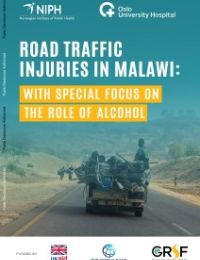
Road traffic crashes are one of the most important causes for physical and psychosocial disease burden and early death worldwide. The United Nations (UN) declared the Decade of Action for Road Safety during the period 2011-2020, with the objective to halve the number of road traffic deaths by 2020. While the number of fatal road traffic crashes has decreased since then in high-income countries (HIC), it has increased in low- and middle-income countries (LMIC). Worldwide, about 90% of the crashes are recorded in LMIC (2016), while these countries had only about 60% of the motor vehicles.
Driving under the influence of alcohol is one of the principal reasons for road traffic crashes. The use of alcohol is also a risk factor for other road users, such as pedestrians and bicyclists. The involvement of alcohol in injurious and fatal road traffic crashes has been well documented in most HICs, but data for LMICs is scarce, particularly for African countries.
The study is a collaborative effort among the Kamuzu Central Hospital (KCH), the Norwegian Institute of Public Health (NIPH) and the Oslo University Hospital (OUH), with the financial support of UK Aid through the Global Road Safety Facility (GRSF), the International Council on Alcohol Drugs and Traffic Safety (ICADTS) and the Norwegian Council for Road Safety (Trygg Trafikk).
The objective of the study was to generate new knowledge about road traffic injuries in Malawi and the extent of traffic accidents related to alcohol use, to increase capacity to conduct alcohol-testing, and develop a database for the findings, which in turn will form the basis for future policymaking to reduce traffic accidents.
The objectives were achieved through collecting data on patients who sought treatment after road traffic crashes and admitted to the Emergency Department at Kamuzu Central Hospital in Lilongwe, Malawi. The data included basic information about the patients, alcohol use before the injury, and information about accident circumstances, including types of road users and vehicles involved. Knowledge and training of local KCH employees to perform alcohol testing and record data were an important aspect of this study.
RESULTS ⌵︎
Acknowledgments ⌵︎
This research project was made possible with the financial support of UK Aid through the Global Road Safety Facility, the International Council on Alcohol Drugs and Traffic Safety and the Norwegian Council for Road Safety.
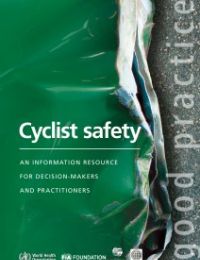
Cycling has many health and environmental benefits. Yet every year 41 000 cyclists die in road traffic-related crashes worldwide. Many leave their homes as they would on any normal day – for school, work, worship, or meeting friends – never to return. Millions more people are injured in road traffic-related crashes while cycling, some of whom become permanently disabled. These incidents cause much suffering and grief, as well as economic hardship for families and loved ones.
However, the growing focus on sustainable mobility – an increasing effort to shift more travel from motorized transport to the use of public transport, walking and cycling – makes cyclists’ safety an increasingly important component of road safety efforts. Cyclist collisions, like other road traffic crashes, are predictable and preventable and therefore should not be accepted as inevitable.
Cyclist safety: an information resource for decision-makers and practitioners describes the magnitude of cyclist death and injury, the key risk factors, and effective interventions. The document stresses the importance of a comprehensive, holistic approach that includes legislation, enforcement and behavioral measures specifically for cyclists; design of the built environment; as well as integrating cyclist safety into overall road safety and transport strategies. It also draws attention to the benefits of cycling, which should be promoted as an important mode of transport given its potential to improve health and preserve the environment.
We hope that this resource, which is designed for a multidisciplinary audience including engineers, planners, law enforcement officers, public health professionals and educators, will contribute towards strengthening national and local capacity to implement cyclist safety measures in various settings worldwide. We encourage all to bring this resource to the attention of those who will use it to save the lives of cyclists.
The World Health Organization (WHO) coordinated the production of this resource. Soames Job, Head GRSF and Global Lead Road Safety, World Bank was one of the principal writers of this document. GRSF contributions to this document were supported by UK Aid.
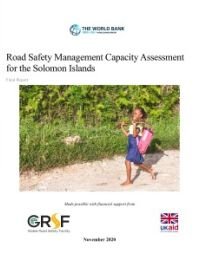
This Road Safety Management Capacity Assessment (RSMCA) seeks to gain a broad understanding of the Solomon Island Government road safety management capacity in order to support the country's development of a national strategy and plan of action to improve road safety outcomes, and subsequently implement those actions effectively.
The RSMCA follows the seven critical road safety institutional management functions (Bliss and Breen 2013) to identify key challenges and provide recommendations for improvement in road safety management, and similarly addresses the Safe System pillars for the interventions level. The seven institutional management functions include: results focus; coordination; legislation; finance and resource allocation; promotion and advocacy; monitoring and evaluation, and research and development of knowledge transfer.
The Safe System pillars include road safety management; safe roads and mobility; safe vehicles; safe road users, post-crash care; and safe speeds. As such, the RSMCA outlines key findings and recommendations relating to both the road safety institutional management functions within the Solomon Islands, and the Safe System Approach, whilst also identifying targeted priority next steps to address road crash death and serious injury in the country.
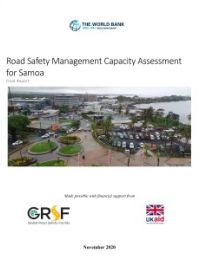
The Road Safety Management Capacity Assessment (RSMCA) is an activity within a broader Advisory Services and Analytics (ASA), which aims to gain a holistic and thorough understanding of the road safety management capacity of three selected Pacific Island Countries (PICs)—Samoa, the Solomon Islands and Vanuatu—in order to support their respective governments to develop national strategies and plans of action to improve road safety outcomes, with a focus on crash data management. The ASA will also support a pilot of the World Bank’s Data for Road Incident Visualization, Evaluation, and Reporting (DRIVER) road crash database in Samoa and provide hands on capacity building in crash analysis.
The ASA is being funded by a Global Road Safety Facility (GRSF) grant from the United Kingdom Agency for International Development (UK AID). The GRSF grant will help the Government of Samoa (GoS) to have a clear image of their road safety situation, risks and challenges, and further on to establish the basis for a national crash database. To ensure sustainability through capacity building and awareness-raising activities, knowledge will be shared with local stakeholders.
The key objectives of this ASA are as follows:
An auxiliary objective is to build capacity to use crash data to identify problems and implement road safety evidence-based measures in Samoa. Furthermore, given the negative impacts of severe weather events on road safety, which will be further exacerbated by climate change, the ASA will help to address the way that road safety is managed in the face of climate change, by training police officers to gain better skills in crash investigation.
The results from the DRIVER pilot in Samoa will be shared with counterparts in selected other PICs, with the aim of scaling up the system across the region. Only with accurate data can road safety be effectively managed and improved, and results measured. In support of this, as of October 2019, the World Bank’s Environmental and Social Framework (World Bank 2019) calls for road safety to be considered on all World Bank-funded projects.
The World Bank is also currently providing assistance to the road sector in Samoa through several projects, including the Samoa Climate Resilient Transport Project (SCRTP), which commenced in 2018. SCRTP will support the GoS to improve the climate resilience of the road network and provide key assistance required to contribute towards effectively managing climate resilient and safe road sector assets. One of the sub-components of SCRTP is dedicated to establishing and operationalizing a database for recording and analyzing road crash data.
The database will combine the existing siloed data, housed in different government agencies, into a single readily accessible platform under the Ministry of Work, Transport and Infrastructure (MWTI). The system will make use of DRIVER, to be piloted through this road safety ASA. SCRTP has other sub-components and activities focused on road safety, such as Road Safety Audits for project roads, a driver licensing training pilot focusing on women, and a road safety engineering technical assistance activity. This GRSF ASA will provide crucial data and insight for the successful delivery of the road safety program under SCRTP, plus other ongoing World Bank-financed projects.
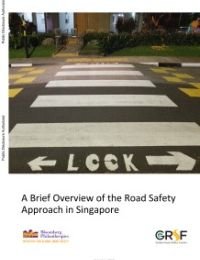
The report introduces how the Safe System Approach works, with a focus on road infrastructure and road safety engineering best practices from one of the best performing countries in Southeast Asia and the Pacific, Singapore.
Singapore roads are not only considered the safest in the region, they rank among the safest globally. Road safety management rules and regulations implemented in the country have resulted in significant strides in managing the effects of collision factors related to roadway design, human behavior, and vehicle attributes. As a result, road safety statistics have shown that fatalities on the Singapore road network have been steadily declining over the past decade. This is leading to a desire on the part of neighboring countries to follow Singapore's example and learn from its experience.
In order to mitigate collisions attributed to vehicle inadequacies or defects, one of the measures taken in Singapore was to enforce a strict vehicle import policy. Vehicle imports are permissible from countries that have adopted and comply with recognized high vehicle safety standards. Vehicle safety compliance is particularly focused on 52 items specified by the Land Transport Authority (LTA). In addition to strict vehicle import standards, Singapore enforces a strict vehicle quota system, which regulates the number of vehicles on the road network. Additionally, vehicles are required to undergo frequent inspections. Cars between 3 and 10 years old are required to have a biennial inspection, and cars older than 10 years are required to undergo annual inspections.
Furthermore, taxis are required to undergo inspections every six months. Road safety education and driver education are core tenants of Singapore's roads safety strategy. Road safety education is predominately undertaken by the Singapore Traffic Police, but nongovernmental organizations such as the National Security Coordination Secretariat contribute significantly to road safety education in Singapore.
Document also available in : Thai, Bahasa (Indonesian), Bahasa (Indonesian), Vietnamese
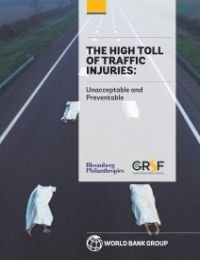
Key Findings ⌵︎
Each year, 1.25 million people lose their lives on the world’s roads and another 20 to 50 million are seriously injured. The tragic loss from a road traffic death or serious injury is compounded by the harm to households and social networks. A disproportionate 90% of road traffic injuries (RTIs) occur in low- and middle-income countries (LMICs), representing a major public health and economic burden. This is an eminently preventable problem that is critical to the development agenda. Unfortunately, due to lack of solid data, the impact of road injuries on economic growth and social welfare has been difficult to assess.
A new World Bank report funded by Bloomberg Philanthropies, The High Toll of Traffic Injuries: Unacceptable and Preventable, looks to fill the gap. It proposes a comprehensive methodology to quantify both the income growth and social welfare benefits that safer roads could bring to developing countries. The analysis is based on data collected from 135 countries over 24 years, and focuses on China, India, the Philippines, Tanzania, and Thailand—five geographically, demographically and economically diverse LMICs.
The study shows that reducing the number of RTIs in developing countries not only increases income growth, but also generates substantial welfare benefits to societies.
Key findings from the report include:
> Press Release: Road Deaths and Injuries Hold Back Economic Growth in Developing Countries

The Road Safety Management Capacity Reviews and Safe System Projects Guidelines have been designed to assist country road safety professionals, World Bank and regional development bank staff, international consultants, community groups, private sector organizations, and all other global, regional and country partners and stakeholders to conduct capacity reviews and prepare follow-up road safety projects in a variety of low and middle-income countries and investment settings.
The purpose of the Guidelines is to:
The Guidelines emphasize managing for results and the associated strengthening of country road safety management systems, with special attention being paid to the role of the lead road safety agency in ensuring institutional effectiveness and efficiency in program delivery. They highlight the importance of addressing all elements of the road safety management system, taking a staged approach to country road safety investment, and targeting the highest concentrations of deaths and injuries across the road network.
For more information visit this page.
This report is also available in:
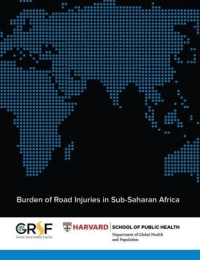
The 2010 Global Burden of Disease (GBD-2010) was a systematic effort to quantify the comparative magnitude of global health loss due to 291 diseases and injuries, 67 risk factors, and 1,160 sequelae by age, sex, and country from 1990 to 2010. The project was led by the Institute for Health Metrics and Evaluation (IHME) and included a consortium of academic institutions. The World Bank Global Road Safety Facility commissioned a special effort at Harvard University to improve the estimates of road injuries in sub-Saharan Africa generated as part of GBD-2010 by incorporating more data and better methods for the region.
Executive Summary
The UN Decade of Action for Road Safety 2011-2020 calls on national governments in sub-Saharan Africa and worldwide to direct substantial resources to stem the increasing burden of road traffic injuries. Bringing such attention to road safety requires demonstrating the importance of the problem relative to other major threats that currently confront sub-Saharan Africa. Therefore, in this study, we estimate the burden of road injuries relative to other health issues in the region through a systematic and scientific effort to quantify the comparative magnitude of health loss due to all diseases and injuries. We track the relative evolution of diseases and injuries since 1990 to show the increasing importance of road injuries to the health and development agenda in sub-Saharan Africa. We find that:
Road safety has emerged as an important health priority in sub-Saharan Africa. Trends over the last two decades show that road injury rates in the region have remained at among the highest in the world even though substantial improvements are being made in controlling other diseases, such as tuberculosis, malaria, and diarrheal disease. Unless significant preventive efforts are undertaken, road safety will continue to climb in regional health rankings during the UN Decade of Action for Road Safety. National governments and the international development community need to prioritize road safety in the region and implement the recommendations of the 2004 World Report on Road Traffic Injury Prevention.


